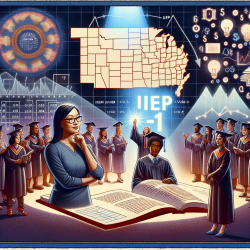Introduction
The integration of mindfulness into various sectors, including education, has shown promising potential in addressing stress and enhancing well-being. The research article, "Too Early to Tell: The Potential Impact and Challenges—Ethical and Otherwise—Inherent in the Mainstreaming of Dharma in an Increasingly Dystopian World" by Jon Kabat-Zinn, explores the implications of mainstreaming mindfulness, or Dharma, and its ethical challenges. As a practitioner in the field of education, especially in special education, understanding and implementing these findings can significantly enhance your skills and the services you provide.
Understanding the Ethical Framework of Mindfulness
The mainstreaming of mindfulness is deeply rooted in the ethical teachings of the Buddha, emphasizing wise speech, wise action, and wise livelihood. For practitioners, this implies an approach that is not only therapeutic but also ethically grounded. The ethical dimension of mindfulness ensures that the practice is not merely a tool for stress reduction but a holistic approach to human well-being.
Practical Implementation in Educational Settings
For practitioners working with students, especially those with special needs, incorporating mindfulness can be transformative. Here are some practical steps to implement mindfulness in educational settings:
- Mindful Breathing Exercises: Begin sessions with simple breathing exercises to help students center their attention and reduce anxiety.
- Mindful Listening: Encourage students to engage in active listening, fostering a classroom environment of respect and empathy.
- Mindful Movement: Incorporate activities like yoga or tai chi to promote physical awareness and relaxation.
- Reflection Journals: Have students maintain journals to reflect on their mindfulness practices and emotional responses.
Encouraging Further Research
The research by Kabat-Zinn highlights the need for ongoing exploration into the ethical implications of mindfulness. Practitioners are encouraged to delve deeper into the literature and participate in professional development opportunities. Attending conferences, engaging in webinars, and reading current publications can provide valuable insights into the evolving landscape of mindfulness in education.
Addressing Challenges and Opportunities
While the mainstreaming of mindfulness offers numerous benefits, it also presents challenges, particularly in maintaining the integrity of the practice. Practitioners must be vigilant against the commodification of mindfulness and ensure that their approach remains true to its ethical roots. This involves continuous self-reflection and adaptation to the unique needs of students.
Conclusion
Integrating mindfulness into educational practice not only enhances the skills of practitioners but also enriches the learning experience for students. By grounding their practice in the ethical teachings of Dharma, educators can contribute to a more compassionate and mindful world. For those interested in exploring this topic further, I highly recommend reading the original research paper by Jon Kabat-Zinn. To read the original research paper, please follow this link: Too Early to Tell: The Potential Impact and Challenges—Ethical and Otherwise—Inherent in the Mainstreaming of Dharma in an Increasingly Dystopian World.










